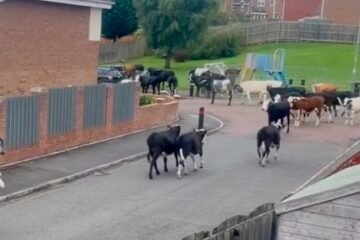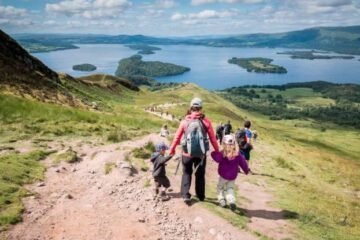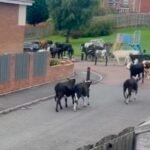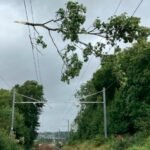A new study is tagging wild red deer in Scotland’s Highlands with GPS collars to understand how their movements and grazing habits are reshaping the land. And the early signs suggest it could be a game-changer in managing both deer numbers and fragile ecosystems.
Why the Red Deer Matters More Than You Think
Scotland’s red deer are majestic, no doubt. But there’s a problem.
Their population has exploded over the past few decades — and with that comes pressure on native woodlands, peatlands, and rewilding projects.
Red deer, unlike roe or sika, are huge and hungry. They can stop a young forest in its tracks by munching through saplings before they even get started.
That’s why scientists from Durham University and the Affric Highlands project are stepping in — armed with data, not rifles.
![]()
22 Deer, 200,000 Hectares, 1 Question: Where Do They Go?
Here’s the setup.
A total of 22 stags will be fitted with GPS collars across a massive swathe of the Highlands — from Glen Affric to the west coast. These trackers will log their locations round-the-clock.
And it’s not just for kicks. The researchers want to know:
-
How do deer move throughout the seasons?
-
Where do they cluster, and why?
-
How do they react to human activity like fences, culling or stalking?
The answers could reshape how estates, conservation groups, and local councils approach deer management.
One-liner: It’s data-driven decision-making — hoof by hoof.
Deer Numbers Have Doubled Since the 1990s
The scale of Scotland’s wild deer boom is staggering.
Back in 1990, the wild deer population was estimated around 500,000. Today? It’s closer to one million. Red deer make up a massive share of that.
Deer densities now often surpass 40 per square kilometre in some areas, putting severe strain on vegetation and soil.
Here’s a rough breakdown of wild deer in Scotland:
| Deer Species | Estimated Numbers | Native? |
|---|---|---|
| Red Deer | ~400,000+ | Yes |
| Roe Deer | ~350,000 | Yes |
| Sika Deer | ~125,000 | No (Japan) |
| Fallow Deer | ~75,000 | No (Rome) |
In short: too many mouths, not enough saplings.
What GPS Tracking Can Actually Tell Us
So why the collars?
Red deer are elusive. Vast estates. Remote glens. Foggy moors. It’s hard to observe patterns by eye alone.
But with GPS collars logging real-time movement, researchers can map how individual deer use space — down to the metre.
This matters a lot when figuring out where to build deer fences, when to schedule culling operations, or how to balance hunting tourism with conservation.
Some of the main data goals include:
-
Pinpointing “high-pressure” grazing zones
-
Tracking seasonal migration between glens and higher altitudes
-
Measuring responses to nearby human activity (shooting, fencing, hiking)
One-sentence paragraph: It’s not just about deer — it’s about what they destroy, avoid, or favour.
Woodland Regeneration at the Heart of the Issue
Red deer may be iconic, but their impact on rewilding efforts is pretty brutal.
Scotland’s native woodlands — Scots pine, birch, rowan, willow — often struggle to regenerate without human intervention. That’s because deer graze the new shoots into oblivion.
This study supports the Affric Highlands initiative, a long-term project aiming to restore 200,000 hectares of degraded landscape — through native forest growth, peatland recovery, and even reintroduction of key species.
Without better deer management? It’s dead in the water.
And let’s be clear: no one’s talking about extermination. This is about balance. About coexistence.
An Ethical Tightrope, But Carefully Walked
Let’s talk animal welfare — because this isn’t a cowboy operation.
The GPS collars are non-invasive and fitted under the strict supervision of veterinarian Dr Neil Anderson of the Royal (Dick) School of Veterinary Studies.
Every element was signed off by the UK Home Office, and also reviewed internally by Durham University’s own ethics board.
This project knows it’s walking a line — between research, conservation, and animal rights.
In fact, Scotland has some of the tightest animal research regulations in Europe.
Working With Stalkers, Not Against Them
Here’s something many won’t expect.
The scientists aren’t clashing with traditional estate owners or deer stalkers — they’re working alongside them.
From sporting estates to community trusts, landowners have bought in. Many see the benefit of understanding the deer they’re tasked with managing.
And it’s not just about culling. It’s about smarter culling. Strategic. Seasonal. Targeted.
Or in plainer terms: Don’t just shoot in the dark.


















